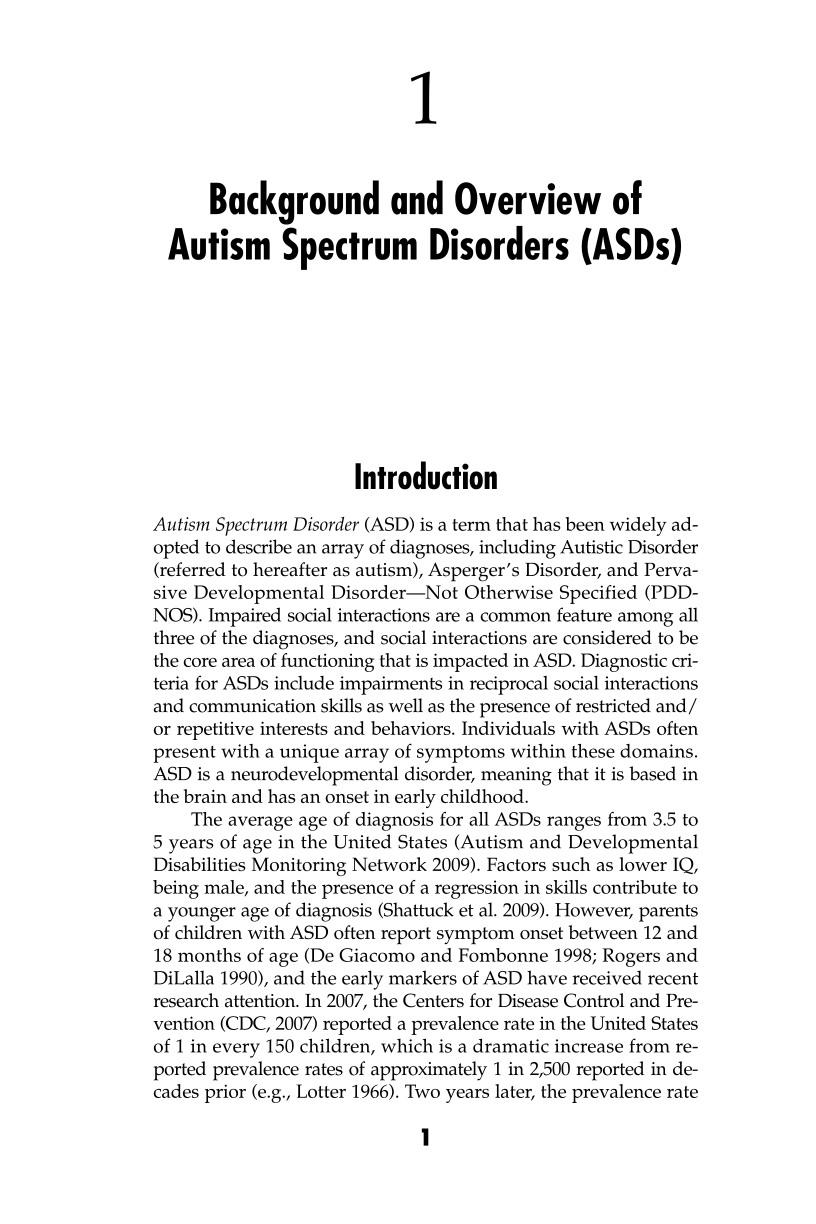1
1
Background and Overview of
Autism Spectrum Disorders (ASDs)
Introduction
Autism Spectrum Disorder (ASD) is a term that has been widely ad-
opted to describe an array of diagnoses, including Autistic Disorder
(referred to hereafter as autism), Asperger’s Disorder, and Perva-
sive Developmental Disorder—Not Otherwise Specified (PDD-
NOS). Impaired social interactions are a common feature among all
three of the diagnoses, and social interactions are considered to be
the core area of functioning that is impacted in ASD. Diagnostic cri-
teria for ASDs include impairments in reciprocal social interactions
and communication skills as well as the presence of restricted and/
or repetitive interests and behaviors. Individuals with ASDs often
present with a unique array of symptoms within these domains.
ASD is a neurodevelopmental disorder, meaning that it is based in
the brain and has an onset in early childhood.
The average age of diagnosis for all ASDs ranges from 3.5 to
5 years of age in the United States (Autism and Developmental
Disabilities Monitoring Network 2009). Factors such as lower IQ,
being male, and the presence of a regression in skills contribute to
a younger age of diagnosis (Shattuck et al. 2009). However, parents
of children with ASD often report symptom onset between 12 and
18 months of age (De Giacomo and Fombonne 1998; Rogers and
DiLalla 1990), and the early markers of ASD have received recent
research attention. In 2007, the Centers for Disease Control and Pre-
vention (CDC, 2007) reported a prevalence rate in the United States
of 1 in every 150 children, which is a dramatic increase from re-
ported prevalence rates of approximately 1 in 2,500 reported in de-
cades prior (e.g., Lotter 1966). Two years later, the prevalence rate




























































































































































































































































































































































